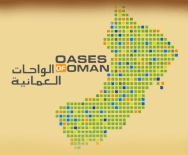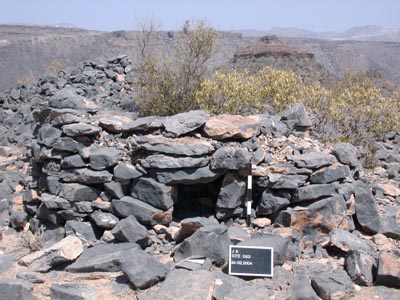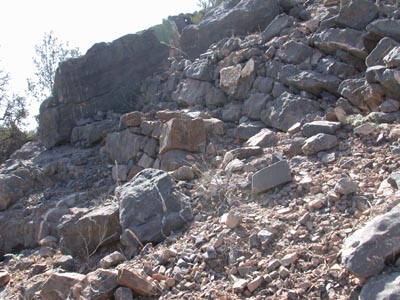 |
| Archaeology |
| History |
| Urban Planning |
| Agriculture |
| Landscape Ecology |
 |
Work package: Archaeological investigations in respect to the origin and development of oasis settlements in Oman Contact Person: Dr. Jutta Häser, German Protestant Institute of Archaeology, Amman Scientific staff and PhD students: Dr. Jutta Häser, Dr. Jürgen Schreiber, Dipl.-Ing. Martin Grosch, Frank Voigt, M.A. Objectives: The research is focused on processes of transformation throughout history, regarding the architecture and material culture, the economy and ecology of the oasis settlements in a regional and interdisciplinary approach. The aim of the archaeological study is the investigation of the settlement in respect to their establishment and development as well as their ecological setting. Study locations:
Archaeological survey at Al Jabal al Akhdar in 2004 and 2006 The Jabal Akhdar region was a prohibited area only used by the Oman military. This restriction of access was loosened in 2000 and abolished in 2005. Therefore, the archaeological survey of this project in 2004, was the first one which was carried out in that area. It was concentrated on the southern part of the Saiq-Plateau. Despite of the short time (five days) for the survey, 101 archaeological sites have been registered.
Aside the settlement sites, also tombs of the same period were found. Some of them have the shape of huts that is why they are called hut-graves.
Remains of the Late Iron Age and the Early Islamic period have not been found. Only remains of the Middle Islamic period are attested. During this period the fortress of the Early Iron Age was reused. Another Middle Islamic site has been detected south of Massirat al-Rawajeh. Some scattered pottery sherds were found on the fields, a situation which has been also observed at Balad Seet in the Wadi Bani Awf before. All other settlement sites were founded in the Late Islamic period. Support The archaeological project was financed by the German Institute of Archaeology, the Sultan Qaboos University Muscat and the German Research Foundation.
© Jutta Häser
|
|||||||||||||||||||

